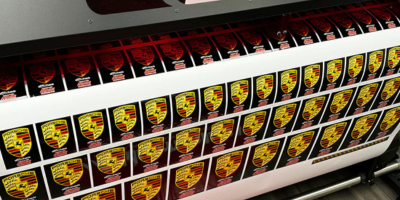
In today’s competitive business environment, the impact of high-quality visual communication cannot be overstated. Whether you are promoting a new product, setting up an event, or branding your storefront, printing plays a vital role in delivering your message effectively. This article explores poster printing, banner printing, and printing techniques on various materials like neoprene, PVC, styrene, and even tiles, to give you a full understanding of how modern printing solutions can support your marketing goals.
Poster Printing
Poster printing is an essential marketing tool used across industries. Posters are not just informative; they’re also visually compelling, often designed with bold graphics and striking color schemes to catch attention. From retail stores to movie theaters and trade shows, posters are widely used to create brand awareness or promote events. They are available in various sizes and finishes, including matte, gloss, and semi-gloss.
Modern poster printers utilize high-resolution inkjet or laser printing technology to ensure sharp images and vivid colors. Depending on the requirement, posters can be printed on photo paper, cardstock, or synthetic materials for durability and weather resistance.
Banner Printing
When it comes to larger displays, banner printing is the go-to solution. Banners are ideal for outdoor advertising, trade shows, exhibitions, and storefront signage. Made typically from vinyl or mesh materials, banners are known for their robustness and resistance to the elements.
Digital printing technology, especially large-format inkjet printers, allows for vibrant, full-color designs that can cover extensive surfaces without pixelation. Banners can also be customized with grommets or pole pockets for easy installation. The ability to print banners quickly and affordably makes them a favorite for both short-term promotions and long-term brand visibility.
Printing on Neoprene
Neoprene, a synthetic rubber material commonly used in wetsuits, mouse pads, and protective gear, is gaining popularity in promotional printing. Printing on neoprene requires special ink and printing techniques due to its flexible and absorbent surface. Sublimation and screen printing are often used for this purpose, providing long-lasting, vibrant images that do not crack or peel over time.
Customized neoprene items like laptop sleeves, coasters, and bottle holders are excellent promotional products for businesses aiming to boost brand recognition.
Printing onto PVC
Polyvinyl chloride (PVC) is another versatile substrate for commercial printing. Printing onto PVC sheets or boards is commonly done for indoor and outdoor signage, point-of-purchase displays, and exhibition graphics. PVC’s smooth surface and rigidity make it ideal for both screen printing and digital flatbed printing.
Due to its durability, PVC can withstand harsh weather conditions, making it a practical choice for outdoor installations. Additionally, PVC signs are lightweight and easy to mount, offering a cost-effective signage solution.
Printing onto Styrene
Styrene, a type of plastic similar to PVC but thinner and more flexible, is frequently used for indoor signage, promotional displays, and retail graphics. It is an economical choice for temporary signage due to its lightweight and ease of printing. Printing onto styrene is done using UV-curable inks on flatbed digital printers, which provide excellent adhesion and image clarity.
Styrene’s adaptability makes it suitable for contour cutting, allowing businesses to create custom shapes and designs that enhance visual appeal.
Inkjet Printing onto Tile
One of the most innovative applications of digital printing technology is inkjet printing onto tile. This process allows for detailed, full-color images to be printed directly onto ceramic or porcelain tiles. The result is a durable and visually stunning surface, perfect for decorative wall murals, custom backsplashes, and artistic installations.
Special UV or ceramic inks are used, and in some cases, tiles are fired in a kiln after printing to enhance durability. This method opens up creative opportunities for interior designers and homeowners alike, transforming plain tiles into customized works of art.
Conclusion
With advances in digital technology, the range of materials and methods available for printing has expanded dramatically. From standard banner printing and poster creation to specialized processes like printing on neoprene, PVC, styrene, and even tiles, businesses now have a wealth of options to express their brand creatively and effectively. Investing in high-quality printing not only elevates your brand’s image but also helps you communicate your message with clarity and impact.



